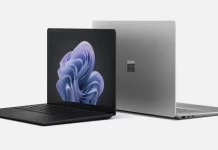Earlier this month at CES, major laptop and PC OEMs unveiled their new line of machines that will soon launch in the market. A majority of these were laptops boasting the latest AMD or Intel chip, claiming to have AI features onboard. Before these laptops hit the market, Microsoft revealed the guidelines of what qualifies as an AI laptop.

According to TrendForce, Microsoft now says that laptops with AI features should have at least 16 GB of RAM. This move is expected to make people want more DRAM and make devices with 8 GB RAM less popular.
This is part of a wider trend where AI applications are getting closer to where we use our devices, not just on big servers. The global market for AI servers is supposed to grow a lot, with more than 1.6 million units, and a 40% growth rate.
For these AI PCs, they need to do at least 40 trillion operations per second (TOPS) to be good enough. This has started a big competition between companies that make computer chips. Right now, Qualcomm’s Snapdragon X Elite is the only chip that does 45 TOPS, meeting the requirement. Intel’s Meteor Lake and AMD’s Ryzen 8040 are a bit short, but the new AMD Ryzen 8050 and Intel’s Lunar Lake, which will be launching by the second half of 2024 should be good enough.
Because Qualcomm followed the rules early, it’s in a good position to sell its products. The first “Windows AI Ultrabooks” will use the Snapdragon X Elite, and big companies like Dell, Lenovo, and HP are planning to make products with Qualcomm’s technology. This is a problem for Intel and AMD, who usually have a strong position in the PC market.
Microsoft’s rules will also affect the kind of memory technology we use. We’ll start using LPDDR5x instead of the current DDR SO-DIMM modules because it can send data faster, which is important for AI. TrendForce thinks that about 30-35% of the demand for PC DRAM will be for LPDDR, and this will go up as AI PC requirements get more demanding.
RELATED:
- Microsoft Expands Copilot Access, Bringing AI-powered Learning to More Students and Teachers
- Microsoft Unveils Affordable AI Copilot for Everyday Users
- GPD Win Max 2 mini laptop cum handheld gaming console featuring AMD Ryzen 7 8840U APU unveiled
(Source)







